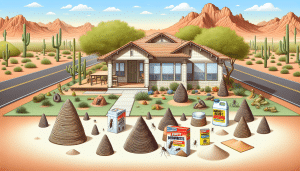Termites are resilient pests that can thrive in a variety of climates, from hot and humid to cool and arid. Each climate presents its own unique challenges when it comes to termite control. In this article, we’ll explore the challenges of termite control in different climates and provide effective solutions to keep these silent invaders at bay.
Contents
The Impact of Climate on Termite Activity
Termites are highly adaptable, but their activity levels can be influenced by the climate of a particular region. Here’s how climate affects termite behavior:
1. Hot and Humid Climates
Hot and humid climates create ideal conditions for termites. The warmth and moisture make it easier for termites to forage for food and establish colonies. These regions often experience year-round termite activity.
2. Cool and Temperate Climates
In cooler climates, termite activity tends to slow down during the winter months. However, termite colonies can survive by going deeper underground or finding warmth in heated structures.
3. Arid and Dry Climates
Arid climates can be challenging for termites due to the lack of moisture. However, termites can still thrive in areas with consistent moisture sources, such as irrigation or leaky pipes.
Termite Control Challenges in Different Climates
1. Hot and Humid Climates
Challenge: Continuous termite activity and rapid colony growth make control efforts more challenging.
Solution: Regular professional inspections and preventive treatments are crucial. Implement moisture control measures to reduce the attractiveness of your property to termites.
2. Cool and Temperate Climates
Challenge: Termite activity may go unnoticed during colder months, leading to delayed detection.
Solution: Continue with routine inspections throughout the year. Consider installing termite bait stations that remain effective in lower temperatures.
3. Arid and Dry Climates
Challenge: Termites can still thrive in areas with localized moisture sources.
Solution: Focus on eliminating moisture sources like leaky pipes or overwatering. Implement termite barriers and regular inspections, especially for properties with irrigation systems.
Effective Termite Control Strategies
Regardless of the climate, certain termite control strategies remain effective:
1. Regular Inspections
Schedule annual termite inspections by professionals like Arizona Termite Control Company. Regular inspections can detect infestations early, preventing extensive damage.
2. Moisture Control
Address moisture issues in and around your home. Fix leaks, improve ventilation, and ensure proper drainage to reduce termite attraction.
3. Termite-Resistant Materials
Consider using termite-resistant building materials when constructing or renovating your home. These materials are less appealing to termites.
4. Chemical Barriers
Professionals can create chemical barriers around your property to deter termites from approaching. These barriers are applied to the soil and can provide long-lasting protection.
5. Bait Systems
Termite bait systems can be effective in various climates. They are strategically placed to intercept foraging termites and can be monitored year-round.
In conclusion, termite control is essential in all climates, but the specific challenges may vary. By understanding the impact of climate on termite behavior and implementing effective control measures, you can protect your home from the threats of these silent invaders. For termite control services tailored to your climate, contact us today at 480-660-3093 or visit our website. Don’t let climate be a barrier to effective termite control – take proactive steps to safeguard your property.




